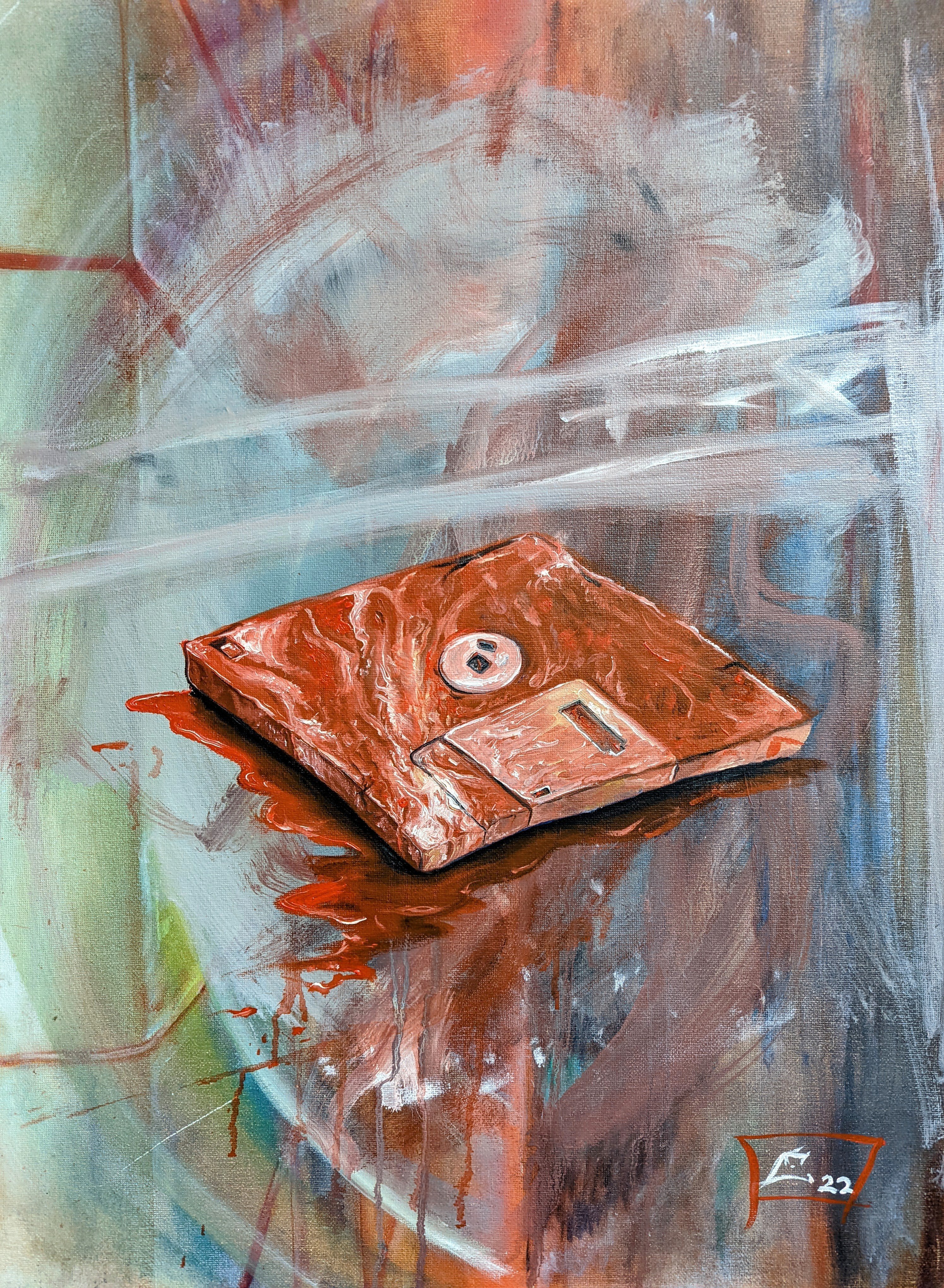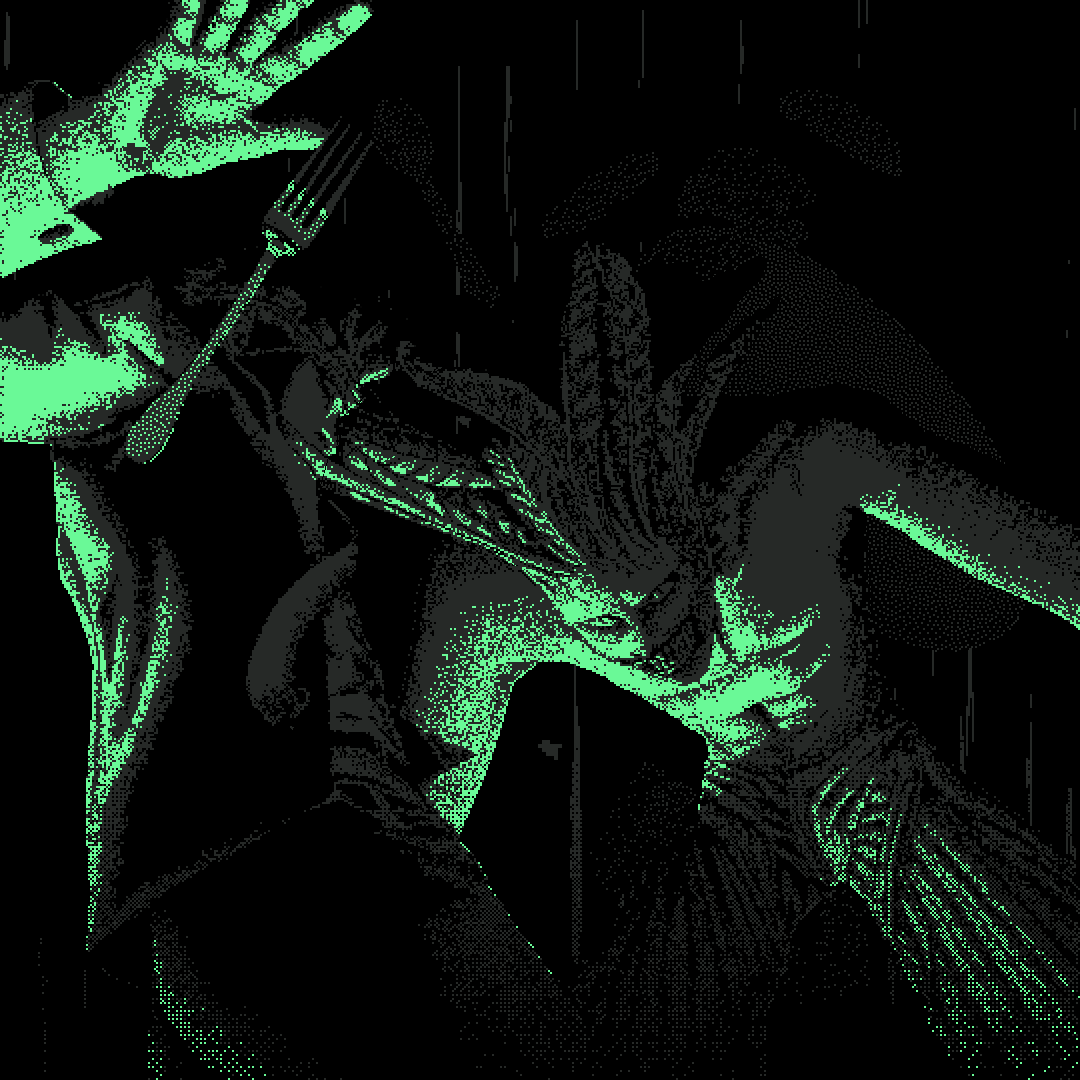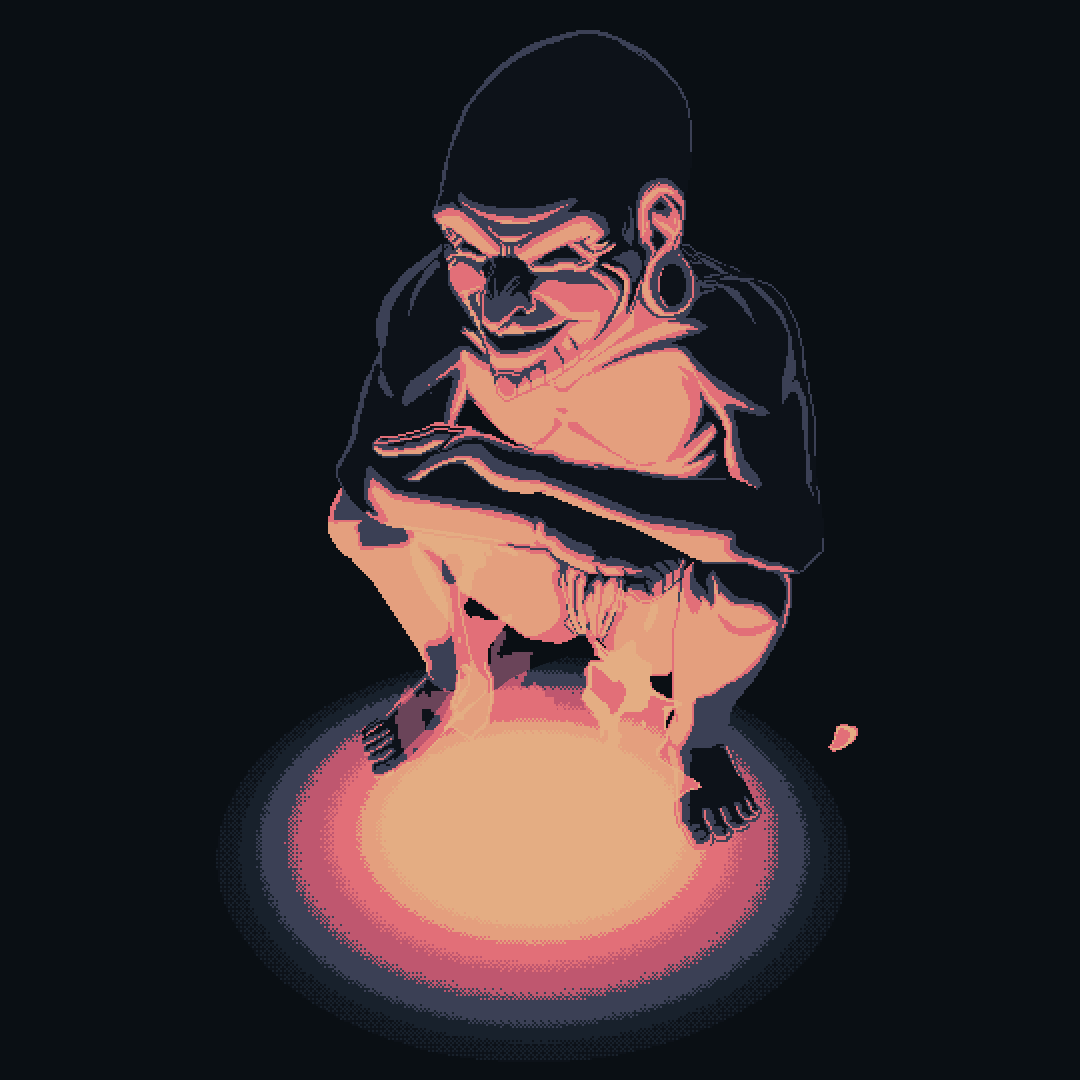The artist talks digital expression, pushing the surreal, and her collaboration with NARS Cosmetics.

Out of the Vault and onto the Chain: the Evolving Nature of Provenance
“Hedrons #320” by ANiMAtttiC, 2022
It’s almost cliche to say NFTs have transformed provenance, but it’s true. Blockchain technology grants artworks a transparent record of origin, ownership, and sales history. It deters forgery. It streamlines valuation. And yet, perhaps more interesting than blockchain’s influence on artwork provenance is on-chain provenance’s influence on artwork value. Provenance has become a social experience in the Web3 space, with its newfound visibility not only recording simple transactions, but bestowing lore, necessitating interaction, and impacting long-term value.
For comparison, look at how provenance and collecting unfold in the trad art world: IRL, if a respected artist or tastemaker publicly collects the work of an unknown creator, that person gets reborn as a rising star, an artist to watch. But the art those collectors buy often gets locked behind closed doors–like a candle suffocating beneath a glass–never to be experienced by the general populace, with no visible record of ownership. These influential collectors add value to public perceptions of an artist and the price they pay affects a piece’s future valuation, but the public often never gets to see those pieces, enjoy them, or decide for themselves how they feel about the art, its quality, or its value. Instead, we’re expected to trust in the discerning eye and baseless promise of a Town Car backseat with a country club membership.
As it’s been for centuries, those determining the value of art have mostly been a small class of obscenely wealthy people who buy, sell, and trade works among themselves to inflate their values and profit without giving artists’ efforts a second thought. Hiding art from those of us on the ground ensures that we don’t have any direct sway in dictating the direction of culture. And if I’ve learned anything from being one of the normals, existing in art spaces dominated by people who have never worked a service industry job, it’s that plenty of old money types, CEOs, celebrities, and trad financiers, have awful (and I cannot emphasize this enough: awful) taste. As it turns out, there’s no real money in fighting the status quo.

“Fifteen shades of gray” by Acid Boy, 2022
But in the cryptoart space, we see everything. Provenance is laid bare before us, its cracks and shadows shaping the value of each artwork. Even someone without the means to buy a piece of art can make a lowball bid, engraving their appreciation on-chain indefinitely and immutably. It’s a version of provenance that isn’t directly tied to ownership, but rather something more akin to interpersonal curation, an endorsement perhaps. In this sense, community members, including ones who do not own art, have a hand in the tastemaking, and therefore the determination of value.
This is not to say influential voices don’t shape value in cryptoart. Of course they do. I can’t tell you how many times I’ve heard someone legitimize an artist by informing me that XCOPY bought their genesis. The difference is that value isn’t trapped in the society pages of a fine art rag or whispered from a gallerist to an oil baron’s wife or an A-list actor’s assistant. Instead, it’s detailed in a real-time immutable record that catalogs all transactions on-chain. This amplified visibility of provenance in the cryptoart space gives 1/1 artists a leg up if they’re lucky enough to catch the eye of a prominent collector or artist. A career reshaped in mere seconds by the click of a button.
Provenance in real-time: An unfolding example
Most cryptoart platforms show recent sales, artist and collector leaderboards, and sales volume on their homepages. But unlike the way provenance works in the traditional art market, in the cryptoart scene, provenance is interactive; a living social experience. Earlier this year on SuperRare, ANiMAtttiC and Acid Boy topped the sales charts1 (both artists are still within the year’s top ten in terms of number of works sold). ANiMAtttiC’s “Hedrons” collection and Acid Boy’s regular drops are not only quality art but, in comparison to much of the work on SuperRare, they’re affordable, coming in usually at 0.05 ETH to 1 ETH. The combination of these two factors prompted more buyers to buy, which in turn was recorded by the recent sales feed on the homepage, immediately visible to all collectors visiting the site. The result? A real-time, evolving record of well-known artists and collectors who scrambled to own a piece of the project – spinning the buyer feeding frenzy flywheel. “Hedrons” is a great example–not only is it about owning a work by ANiMAtttiC, but it’s about owning a piece from that specific series. “I’ve definitely had people pick up ‘Hedrons’ and then there be a domino effect of people who love them and suddenly they all get into collectors’ hands,” they told me over DM. “It’s quite amazing to see, I feel very connected to those holding ‘Hedrons’ and my single editions, the whole thing has really saved my life.”
ANiMAtttiC explained how this domino effect can propel the creation of community: “I also believe this entire space is about forming connections and relationships, and having a piece picked up by a collector with a big following helps connect you with more people that might enjoy your work.” It’s not just artists who get connected to collectors, but collectors connecting with the whole NFT ecosystem. They pointed out that if collectors form relationships with artists and others can see that they support creators, “communities start to form around you.” Considering that owners of “Hedrons” include artists like Moxarra Gonzalez, Oficinas TK, and Mattia Cuttini, as well as plenty of whale collectors and even SuperRare Labs’ own CEO, it’s easy to see how the social properties of provenance helped “Hedrons” explode in popularity.
“Hedrons” are a collection of non-generative 1/1s, each piece being entirely unique. But when it comes to serialized art with different properties, provenance also plays a new and unanticipated role. Recently, I had the opportunity to speak with artists Anne Spalter and Pindar Van Arman about serialized artwork. Anne’s “AI Spaceships” and Pindar’s “bitGAN Collabs,” both series dropped via Pindar and Justin Highland’s sovrn.art–a service that assists artists in building custom smart contracts that grant them complete sovereignty over their works–function as pieces of art, but incorporate some ideological aspects of PFPs and collectibles. Here, they define serials as families of unique and connected images–Anne’s “AI Spaceships,” for example, consists of over 500 AI images that the artist touched up by hand. She said each individual piece took about as long for her to make as any other piece of art, but like PFP projects, “AI Spaceships” is a limited collection where each image features traits varying in rarity. The series launched the “first community” she really felt around her art, she said, in part because she could set a lower price for serial artwork “without cannibalizing [her] market,” and a lower price brings in more collectors. Further, serialized art coupled with a collector community presented the potential for an evolving narrative–”AI Spaceships” is about a future in which the Earth has become uninhabitable due to climate change–and the aspect of trait rarity encourages buying, selling, trading, and conversation. Ultimately, it builds community.
“Community is the most important part,” Pindar said in regard to serials. But in order to get there, you need to reach a “critical mass” of collectors. The value of a serial artwork is shaped not just by its individual merits or provenance (i.e., the artist, chain of collectors, or work itself), but also by the reputation of the collectors of other artworks in the series, how their pieces were valued, and how those people interact with one another. Blockchain’s impact on artwork value is quadratic: A community, with its collectors and the history it builds over time, becomes an aspect of the provenance. This is something innovative and exciting in the world of fine art.
Provenance in multiplicity
Though generative art doesn’t necessarily need blockchain to live, the technology has certainly provided these collections with the space to thrive. And while, like serialized 1/1s, simply being part of the same collection can drive interest due to provenance, generative art also incorporates a different aspect of creative coding. Generative art is produced by an automated system, typically built by the artist themselves. Not only does a collector have a unique piece of art–part of the same collection by the same artist, allowing them to share the experience of collecting with other collectors–but the generative system, most often an algorithm, is in itself a piece of art, created by an artist. This is one of the driving factors behind the popularity of generative collections like Matt Kane’s “Gazers” or Jen Stark’s “Vorex.” As a collector you don’t simply own a piece of art, but a piece of art generated by a piece of art–a unique case when a tool built by an artist is the artist, too.
And as blockchain has fostered new definitions of provenance concerning 1/1 art, it also has opened doors for artists working with editions. While some mediums, like printmaking, are more conducive to editions than others, traditionally, art produced in editions is valued lower than 1/1 art (the 1/1 art is rarer, after all). But, as is the case with collections and serialized art, the owners of editions matter. I bought an edition of Paramnesia by yakim because I liked it, but when I looked to see who else owned one, I noticed Mexican artist Neurocolor’s name in the token’s history. As an appreciator of his art, it felt exciting to find myself connected to him via ownership.
I just checked–he still owns one. Did this influence my decision to buy? No. Will it influence my decision not to sell? No. But there’s something validating about it, knowing we share taste. Me? And Neurocolor? Liking the same art? Maybe I’m good at this whole aesthetic thing after all.
The bottom line is that when it comes to cryptoart, community is built into provenance; really, they’ve become inseparable. I can’t say what the future holds, but it wouldn’t shock me to one day find that community even supersedes it. This is the true revelation of the marriage between provenance and blockchain, setting fire to the old ways of art collecting that separate art from people and people from each other, that allow only select elitists in, making space for the those who want to build something together, to sift through the ashes of dead structures, to find better ways to relate to one another over art. Provenance is no longer only about names scribbled on checks and passed from heirs to auction houses, cementing the place of a painting on the walls of an Upper East Side mansion. It’s not a tool for fraud to cower behind. It’s not a means of gatekeeping. Now, provenance is about decentralizing the art of tastemaking. It allows everyone to be a curator, even if they’re not trying. It’s evolved into the antithesis of what it’s been for centuries, a sure sign of a new age in art.

“ユニー wave 400” by Neurocolor, 2020

Oliver Scialdone is a queer writer and artist based in Brooklyn, NY. They earned a dual-MFA from The New School, and their work can be found in Peach Mag, ImageOut Write, and elsewhere. They used to host the reading series Satellite Lit and they're the Associate Editor at SuperRare Magazine.
Tech






The Future of Giving is On-Chain: NFTs for Social Causes
Tony Fantano interviews artists and NFT project founders who sought to support Ukraine, gender equality and raise awareness about mental illness through selling art and building DAOs.
Curators' Choice






Curated Conversations: Emily Xie
SuperRare Labs digital editor Shutong Liu interviews Emily Xie about how her Art History and Engineering background informed her work, her past year as a full-time artist, and the generative art landscape.

























